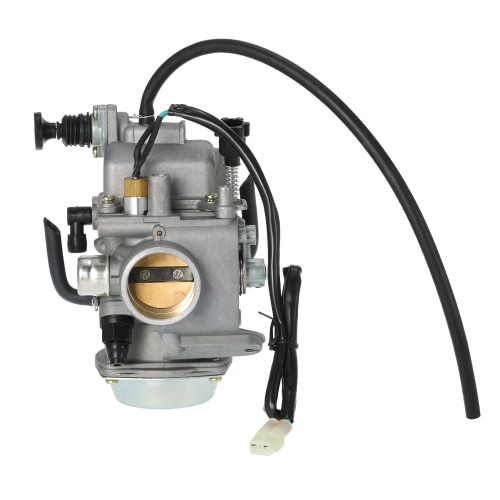A clean, well-tuned carburetor is a key factor in the performance of your Honda Foreman ATV and nothing makes cleaning carburetors faster, safer and easier than an ultrasonic cleaner. Whether you operate a Honda Foreman ATV service shop or do it yourself, you’ll be amazed at just how thorough an ultrasonic cleanerul can be in removing varnish, grease, oil and other contaminants from one of the most intricate assemblies on your Honda Foreman ATV.
Ultrasonic cleaners are used in a wide range of applications to remove virtually any soil or contamination by using the power of cavitation action. This is the term used to describe the implosion of billions of minute bubbles contacting carb parts being cleaned. The bubbles are created by generator-powered ultrasonic transducers bonded to an
ultrasonic cleaning tank and typically operate at an ultrasonic frequency of 37 to 42 kHz (37,000 to 42,000 cycles per second).
When the bubbles implode contaminants are quickly and safely blasted away from wetted surfaces without damaging delicate carb parts. So tiny are the bubbles that they penetrate minute cracks, crevices and blind holes impossible to reach by hand scrubbing using conventional parts washers or aerosol sprays The ultrasonic parts washer will complete the job in less than an hour, meanwhile freeing you up to attend to other tasks. And it will do it in an environmentally friendly manner because the ultrasonic carburetor cleaning formula is a biodegradable concentrate that minimizes disposal problems.
Ultrasonic carb cleaners come in a variety of sizes from bench top units to a floor-mounted
industrial ultrasonic cleaning machine, so you can select any size you need.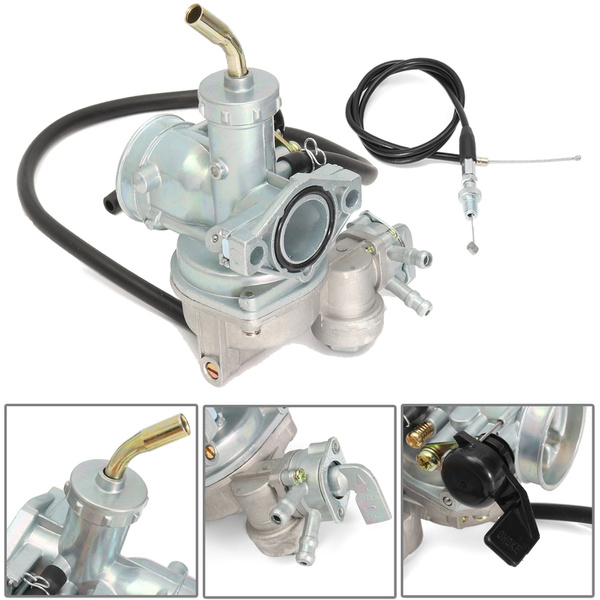 Our most popular 1½ gallon models for cleaning one carburetor at a time are the TOV150-6L and Eh250EL. Select an ultrasonic carb cleaner equipped with a heater to improve the ultrasonic carburetor cleaning process.
Our most popular 1½ gallon models for cleaning one carburetor at a time are the TOV150-6L and Eh250EL. Select an ultrasonic carb cleaner equipped with a heater to improve the ultrasonic carburetor cleaning process.
Whatever the model and size ultrasonic carb cleaner you use there are steps to take before cleaning begins.
Step 1: Removing the Carburetor
First, remove the fenders and take out the seat.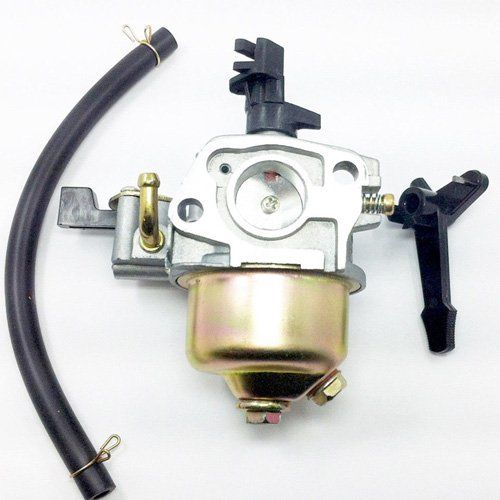 Take out the airbox to get a good look at the carburetor. Unscrew the bolts and pull the gas tank off. From the top of the throttle linkage, unscrew the throttle cable. Remove the other end of the throttle cable from the carb.
Take out the airbox to get a good look at the carburetor. Unscrew the bolts and pull the gas tank off. From the top of the throttle linkage, unscrew the throttle cable. Remove the other end of the throttle cable from the carb.
Unscrew the top and drag the end of the cable out. The needle and slide connected to the cable should pull right off. Remove the black plastic cover on the side of the carburetor by unscrewing it. Unscrew the plastic nut from the carb and pull the choke cable out. Once the choke cable is out, the carb heater will unplug at the wiring harness. After the following steps, the carb should come off easily with just a few pulls and turns.
You now hold in your hand, your Honda Foreman carb.
Congratulations! You have successfully removed your Honda Foreman carb from your ATV! You may now proceed with the next step.
Step 2: Cleaning the Carburetor
Although you can clean your carburetor without any disassembly you will achieve the most thorough cleaning with partial disassembly to allow the solution into the float chamber. Remember that only surfaces that are wetted by the cleaning solution will be cleaned. Fine mesh baskets can be used to hold very small parts.
Remember that only surfaces that are wetted by the cleaning solution will be cleaned. Fine mesh baskets can be used to hold very small parts.
Set the thermostat to 70°C. While the solution is heating, place your carburetor parts in the basket taking care that they do not touch each other. Once the operating temperature is reached lower the basket into the cleaning solution and set the timer for 40 minutes. Cleaning time depends on the condition of the carburetor and may have to be adjusted.
At the end of the cycle remove the components from the bath. If they are not clean replace them in the bath until the cleaning is complete. Then rinse them in fresh water to remove all traces of the cleaning solution and allow them to dry.
Safety note: DO NOT reach into an operating ultrasonic bath. Instead remove the basket if you want to inspect or rearrange the parts.
Step 3: Reinstalling the Carburetor
Return your Honda Foreman ATV carb to its original position, making sure to screw the nuts and bolts holding it into the assembly.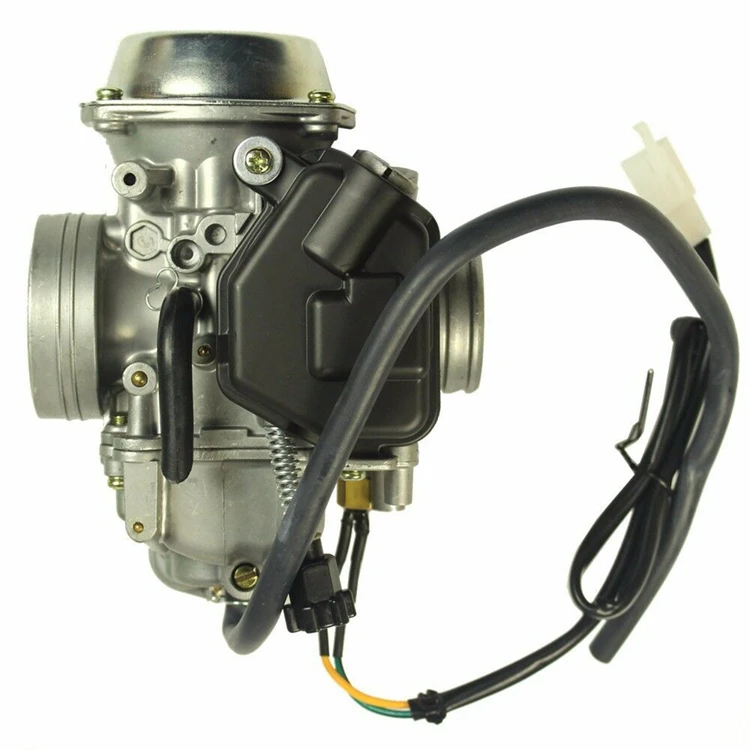 After the carburetor is secure, plug the carb heater wires back into the harness. Return the choke cable by screwing the plastic nut back on the carb. Push it in and make sure it stays in place. Screw the plastic cover back on.
After the carburetor is secure, plug the carb heater wires back into the harness. Return the choke cable by screwing the plastic nut back on the carb. Push it in and make sure it stays in place. Screw the plastic cover back on.
Return the other end of the throttle cable to the carb. Insert the needle and slide connected to the cable on top of your Honda Foreman carburetor. Make sure it stays in place then once it won’t budge, screw the top tightly back on. Return the throttle cable to the top of the throttle linkage exactly where you found it.
After this, a few more steps must be done. Screw the gas tank tightly back on the ATV. Return the airbox so that the carburetor remains hidden. Now for the last step, put the fenders back and install the seat.
Admire the piece of work you just put back together.
Voila! Start the engine, and your Honda Foreman ATV should be good to go.
Oils that rise to the surface of the bath should be skimmed off and disposed of properly.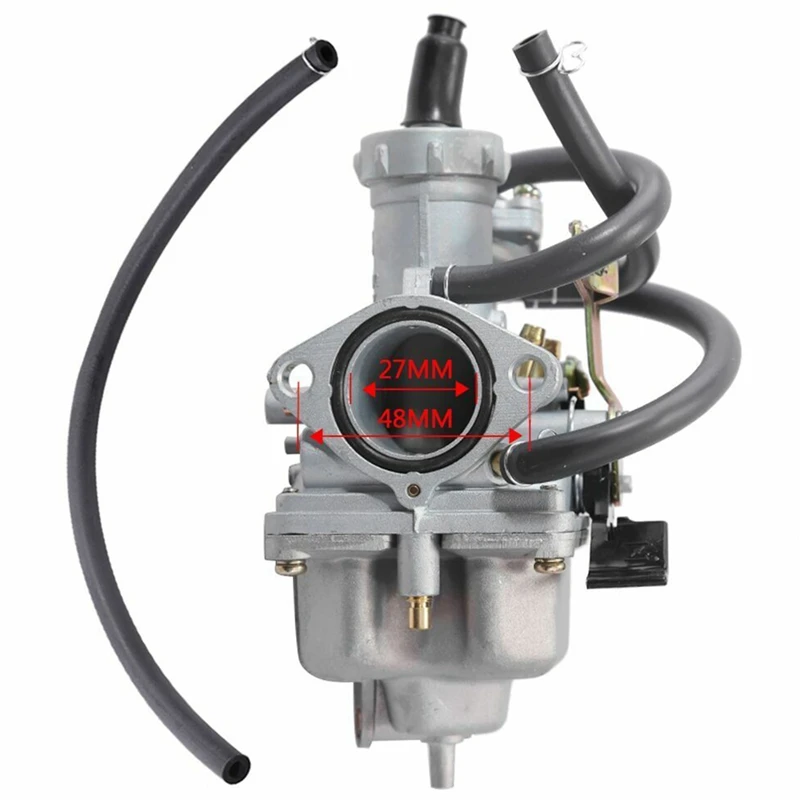 When the solution becomes discolored or cleaning time takes longer it is time to replace it. Drain the tank and dispose of the spent solution according to local regulations. Take the time to remove sludge that settled to the bottom of the tank. Clean the tank using a cleaning process recommended by the manufacturer.
When the solution becomes discolored or cleaning time takes longer it is time to replace it. Drain the tank and dispose of the spent solution according to local regulations. Take the time to remove sludge that settled to the bottom of the tank. Clean the tank using a cleaning process recommended by the manufacturer.
Questions: Contact the iultrasonic ultrasonic cleaning experts at 973 821-4400
Disclaimer: This advice is not provided by a licensed mechanic. Follow at your own risk. We assume no liability for any damages caused by following the advice in this article.
Delivery options and delivery speeds may vary for different locations
Sign In
or enter a zip code
Email * Password *
REPAIR & HOW TO
MAINTENANCE
TROUBLESHOOTING
GUIDES
TIPS & TRICKS
ALL ARTICLES WATCH VIDEOS ABOUT US SHOP PARTS CONTACT US
If your Honda ATV has trouble starting, runs roughly at lower RPM or stalls on idle, the carburetor probably needs cleaning.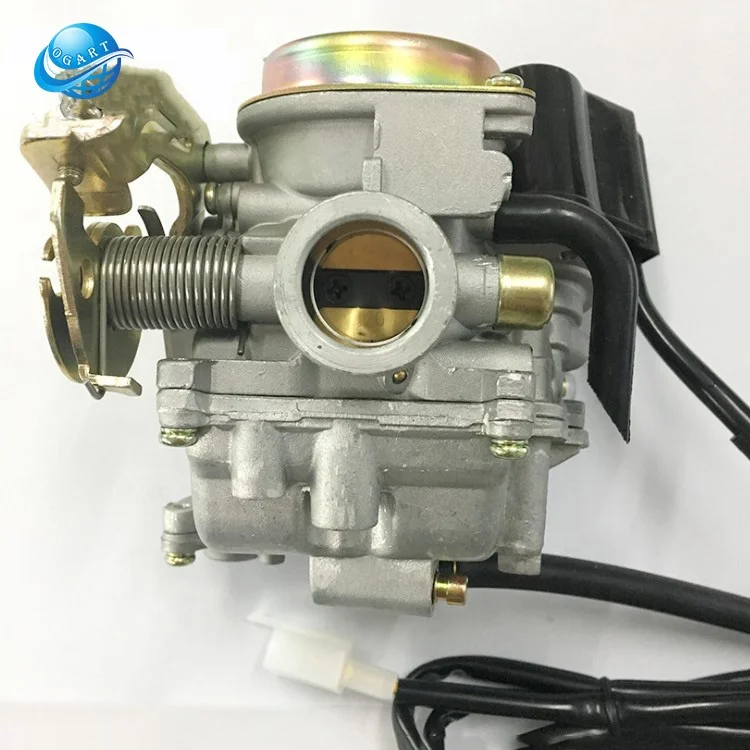
Below we highlight the crucial steps for servicing a Honda TRX carburetor. Watch our Honda TRX 400EX carburetor cleaning video above and follow the steps provided below to get this job done.
Tools and Parts Needed – Honda TRX400 Carburetor CleaningToolsStep 1. Turn off the fuel lever, disconnect the fuel line, and remove the fuel tank.
Step 2. Remove the three airbox mounting bolts, loosen the airbox boot clamp, and remove the intake duct, airbox and boot assembly as one piece.
Step 3. Loosen the clamp holding the carburetor to the engine intake boot and pull the carb free.
Step 4. Remove the plastic throttle cover to access the throttle linkage. Pull the end of the throttle cable from the carburetor, loosen the throttle cable pinch nut, and unscrew the throttle cable elbow from the carb.
PRO TIP: The screws in a carburetor often get stuck in place from years of exposure to the elements. If this happens, use an impact driver to break them free without stripping the screw heads.
Watch the carb removal segment of our Honda TRX 400EX carburetor clean video below.
Dismantling Honda TRX 400EX CarburetorStep 1. Remove all the hoses, inspect them for cracks or splits, and replace them if necessary.
PRO TIP: Label the hoses as you remove them so you know exactly which hose goes where when you reassemble the carb.
Step 2. Remove the fuel strainer screen from the fuel intake tube. Clean the screen thoroughly, then set it aside until it’s ready for reinstallation when you rebuild the carb.
Step 4. Remove the float bowl, followed by the float pin that secures it. Next, carefully remove the float and the float needle valve that sits beneath it.
Step 5. Remove the air-fuel adjustment needle, the main jet holder, and the idle jet.
NOTE: You’ll need to use a D-shaped bit to remove the air-fuel adjustment needle.
Step 6. Remove the main needle jet and sliding throttle valve by taking off the Phillips screw from the pivot arm.
Step 7. Remove the air cut valve assembly.
Watch the carb dismantling segment of our Honda TRX 400EX carburetor cleaning video below.
Cleaning Honda TRX 400EX CarburetorNOTE: The carburetor rebuild kit includes all the jets and needles needed to overhaul a TRX 400 carb, as well as all the O-rings, gaskets and washers. You won’t need to clean the old jets and needles, and you can discard them if you have the kit.
Step 1. Thoroughly clean the carburetor body and the float chamber with carb cleaner. Soak the parts in carb cleaner, and remove as much buildup from within the carburetor body and the float chamber as possible. Squirt carb cleaner through all the channels in the carburetor body to rinse them out.
Step 2. Blow air through all the channels in the carburetor body to remove every last speck of dirt and debris.
Watch the carb cleaning segment of our Honda TRX 400EX carburetor clean video below.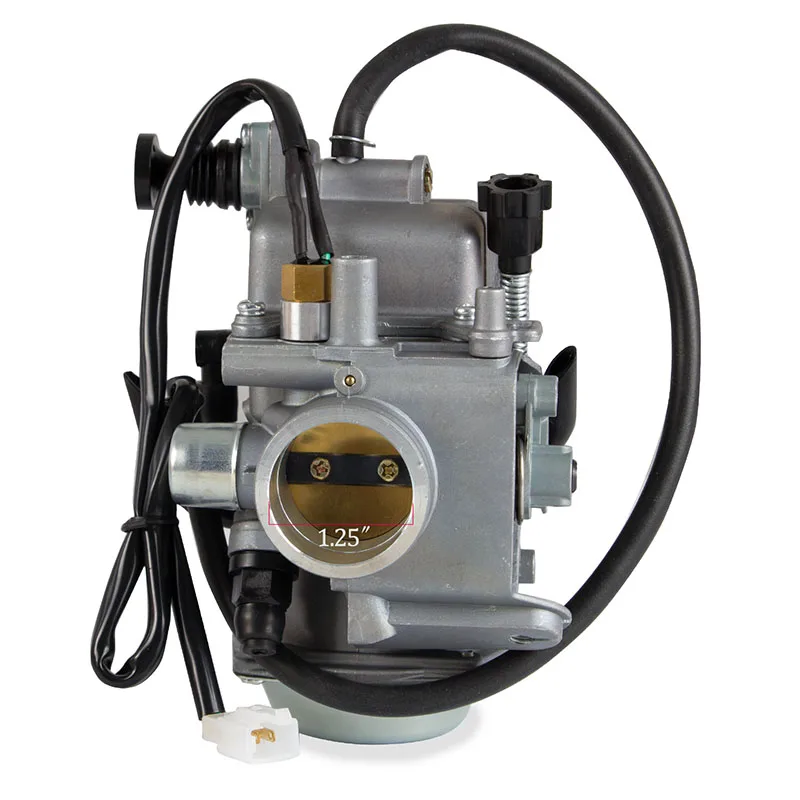
Step 1. Install the new idle jet, the main jet holder and the air-mixture adjustment needle (all included in the carburetor kit), not forgetting the adjustment needle’s washer and O-ring (also included in the kit).
NOTE: When installing parts made of brass (the jets and needles), be very careful not to overtighten them because brass is a soft metal and brass screw threads can easily be stripped. Once the air-mixture adjustment needle has seated, it should be backed off by two and a half turns.
Step 2. Install the new float needle valve (included in the carburetor kit) to the float, and reinstall the float to the carb, making sure the float needle is secure in its channel. Then, reinstall the float bowl.
Step 3. Reinstall the air cut valve assembly and the accelerator pump diaphragm set.
Step 4. Reinstall the main needle jet and sliding throttle valve, making sure the needle is properly seated in the needle holder.
Step 5. Reinstall the fuel strainer screen back into the fuel intake tube, reconnect the fuel hose over it, and reinstall all the other hoses.
Watch the carb rebuilding segment of our Honda TRX 400EX carburetor clean video below.
Reinstalling Honda TRX 400EX CarburetorStep 1. Reinstall the throttle cable elbow, then reattach the throttle cable and reinstall the plastic throttle cover.
Step 2. Press the carburetor into the engine intake boot and tighten the clamp.
Step 3. Reinstall the airbox, intake duct, and boot assembly.
Reinstall the airbox, intake duct, and boot assembly.
Step 4. Reinstall the fuel tank, reconnect the fuel line and you're done.
Watch the carb reinstallation segment of our Honda TRX 400EX carburetor clean video below.
body
By Milena Anderson Reading 3 min. Views 21
Short Answer
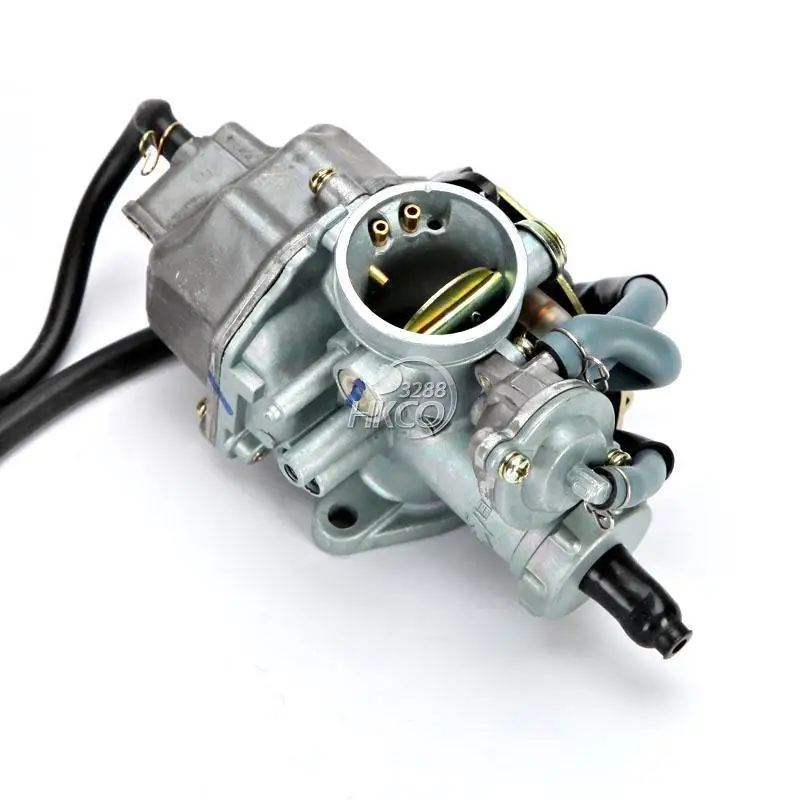
How to clean the carburetor on an ATV without removing it?
If the carburettor can be accessed from above, use a can of carburettor cleaner and a stiff brush. If the carburetor is not accessible from above, remove the air filter and blow out the carburetor with a compressor or air hose.
How long does it take to clean the carburetor on an ATV?
Cleaning the ATV carburetor can take anywhere from a few minutes to an hour or more. Features vary depending on the type of carburetor and its condition. However, cleaning typically involves removing all fuel and air from the carburetor and then cleaning it with soap and water.
What do you soak ATV carburetors in?
Carburetor cleaner, petrol or diesel.
What is the easiest way to clean a carburetor?
Carburetor can be cleaned with carburetor cleaner.
What are the symptoms of a dirty carburetor?
A dirty carburetor does not save fuel well, makes it difficult to start the engine, and can produce an unpleasant odor.
How do I clean a thickened carburetor?
There are several ways to clean a thickened carburetor. One is to use gasoline and a toothbrush to clean the inside of the carburetor. Another way is to soak the carburetor in a solution of water and vinegar for several hours.
One is to use gasoline and a toothbrush to clean the inside of the carburetor. Another way is to soak the carburetor in a solution of water and vinegar for several hours.
Will sea foam clean the carburetor?
Seafoam does not clean up carbs.
Can wd40 be used to clean a carburetor?
WD40 is not a carburetor cleaner and will not work well with carburetors. Carburetor cleaners are specially designed for cleaning carburetors and are available at most auto parts stores.
How to clean the carburetor without carburetor cleaner?
There are several ways to clean the carburetor without carburetor cleaner. One way is to use a piston. Place the carburetor in the sink and fill with water. Place the piston on top of the carburetor and push and pull the piston until the carburetor is clean. Another way is to use a can of compressed air. Blow out the carburetor and clean it with a brush.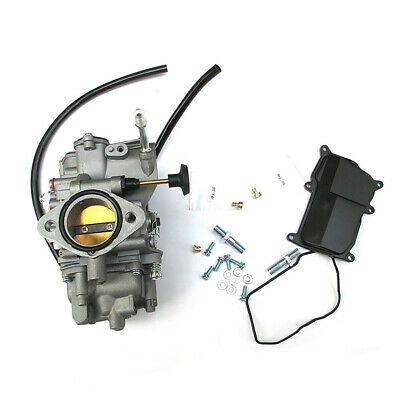
How do I clean a clogged carburetor?
There are several ways to clear a clogged carburetor. One of them is to use a piston. Place the piston on the carburetor and push and pull the carburetor until the obstruction is cleared. Another way is to use a vacuum cleaner with a crevice tool. Make sure the crevice tool is wide enough to fit around the circumference of the carburetor. Set the vacuum cleaner to maximum power and turn it on.
How to clean a thickened carburetor in a small engine?
The carburetors can be cleaned with a carburetor cleaner such as kerosene or petrol. Use a rag to apply the cleaner to the carburetor and then use another rag to clean the carburetor. Be sure to rinse the carburetor thoroughly with water afterwards.
Can carburetor cleaner be sprayed into the air intake?
No, the carburetor cleaner is not a safe air intake cleaner. This could result in engine damage and serious injury.
This could result in engine damage and serious injury.
Can carburetor cleaner be sprayed into the spark plug hole?
There is no guarantee that the carburetor cleaner will do the job of cleaning the spark plug hole, as it may not be effective against the dirt and debris that may accumulate in this area. Also, using carburetor cleaner in this way can damage the engine or other components.
How often should carburetors be cleaned?
Carburetors should be cleaned regularly, usually every 3-6 months.
What can be added to the fuel to clean the carburetor?
There is no one-size-fits-all answer to this question, as the best way to clean a carburetor depends on the specific carburetor and fuel being used. However, some general tips for cleaning carburetors include using a fuel additive designed specifically for carburetors, using a carburetor cleaner, or boiling water and pouring it into the carburetor.
In order for the ATV to work like a clock, the rider needs to regularly carry out a complete maintenance of the equipment. And a key element of maintenance is ATV carburetor adjustment. Over time, the system starts to work incorrectly, which increases fuel consumption, worsens dynamics and other problems appear. So how do you adjust an ATV carburetor?
The operation and life of the engine directly depends on the quality of the fuel mixture. The carburetor is responsible for the preparation of the composition, but after prolonged use of the equipment, the settings “go astray”. This results in:
 Due to incorrect system settings, the engine speed decreases, respectively, its power drops.
Due to incorrect system settings, the engine speed decreases, respectively, its power drops. Many riders who decide to buy an inexpensive ATV simply do not spare the technique and ignore this procedure. But even if you plan to change your device in 1.5-2 years, adjustment is needed. The reason for this is increased fuel consumption. A quad with an untuned carburetor "eats" 30-40% more gasoline, and these are tangible costs.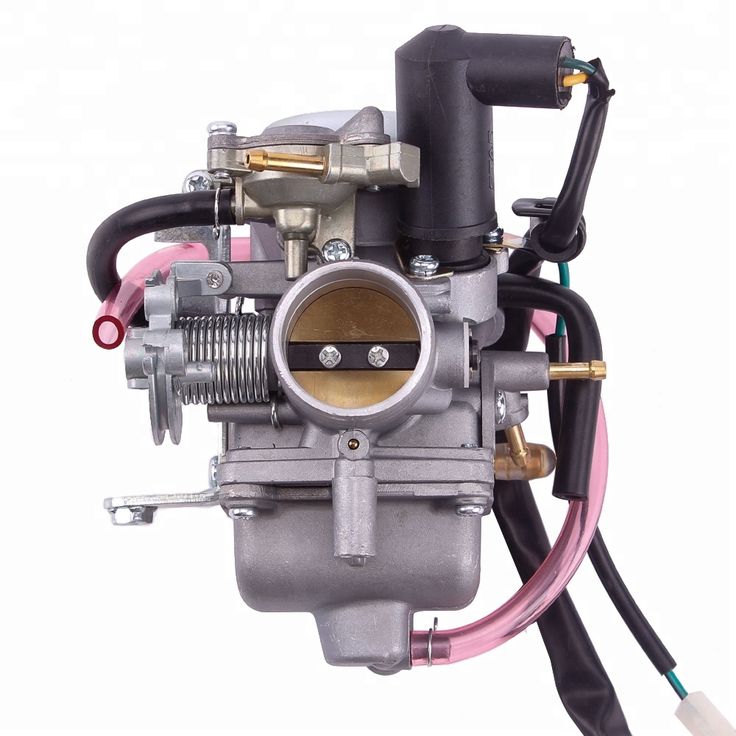
So how do you adjust the carburetor on a Chinese ATV? For this you need:
However, it is important to remember that all adjustments are made only with a "clean" carburettor. This means that the rider needs to remove all the dirt from the node and flush the system to remove condensation and sediment from it.
Note: Just before adjusting, the engine must be warmed up to operating temperature.
To set the carburetor idle speed, the float chamber must first be cleared of fuel. To do this, start the ATV, close the fuel cock and wait until the machine stalls (5-10 minutes).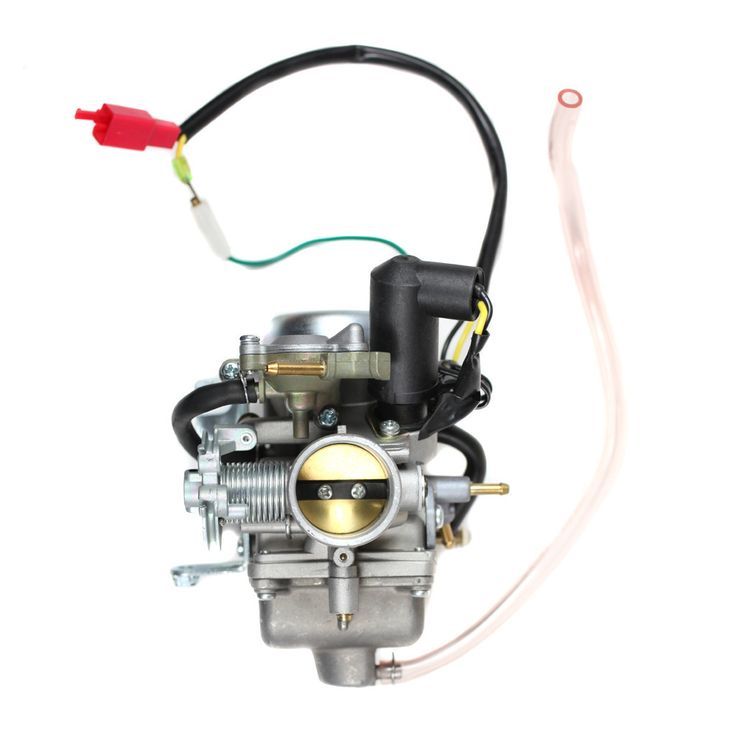 To speed up the process, you can take a little ride on the quadric. Of course, gasoline can be drained, but in any case you will have to warm up the device, so the first method of "removing" gasoline is more effective.
To speed up the process, you can take a little ride on the quadric. Of course, gasoline can be drained, but in any case you will have to warm up the device, so the first method of "removing" gasoline is more effective.
Then:

Read the manual before adjusting the carburetor on a 125cc ATV to be sure. Remember that the location of the bolts is different in different devices, so read the documentation in advance.
To evaluate the quality of the fuel composition, make a test run. After that, unscrew the candle, and evaluate its condition. If it is:
 This means that there is a high concentration of metals in the composition.
This means that there is a high concentration of metals in the composition.
Also look for these "symptoms": damaged tip (electrode failure), oil deposits (damage to rings and caps), chips and inclusions (sign of motor failure).
To adjust the mixture you need to twist the needle cover and pull it out. To get the needle, pull out the cable. After that, move the ring in the required direction (lower - more air, but less fuel and vice versa). Then start the engine and make sure it doesn't stall.
The final step in adjusting the 125cc ATV carburetor is adjusting the gasoline level. To do this, you need:
